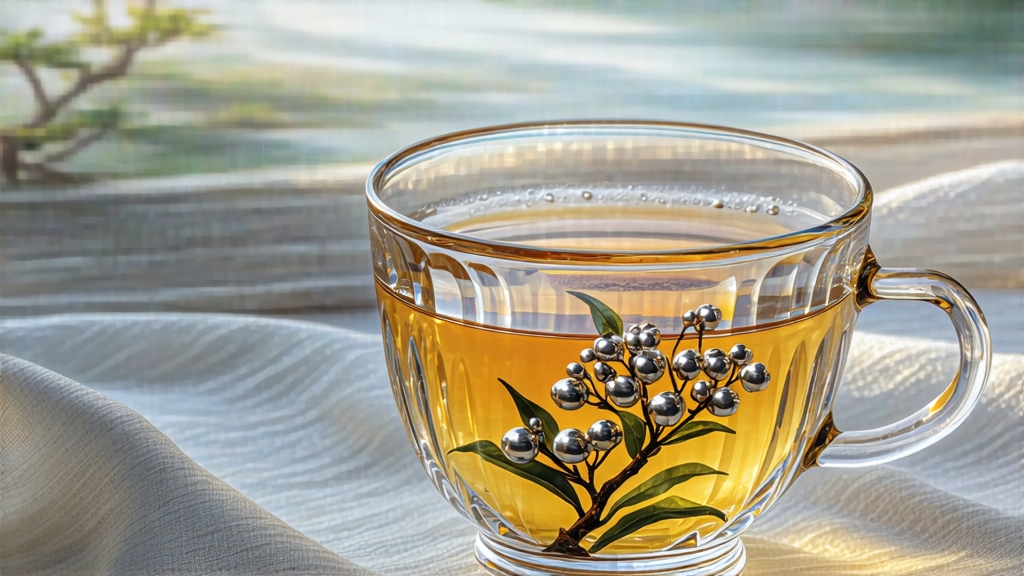
When Chinese tea lovers speak of “white tea,” they are not referring to a pale liquor alone, but to an entire philosophy of restraint. Among the six major tea families, white tea is the least disturbed by human hands, and within that family Bai Hao Yin Zhen—literally “White Hair Silver Needle”—is the most aristocratic. Picked only between mid-March and early April, when the spring sun is still shy and the mountain air carries the scent of plum blossoms, each pluck is a single, unopened bud sheathed in tiny silvery hairs. Those hairs, once dried, catch light like frost on a blade of grass, giving the tea its poetic name and its luminous appearance in the cup.
Fuding, a coastal county in northeast Fujian where granitic peaks meet the East China Sea, is the ancestral home of Silver Needle. The region’s red-phosphate soil, subtropical humidity and persistent sea fog slow the growth of the Da Bai (Big White) tea cultivar, concentrating amino acids and creating the tea signature cool, marine sweetness. Historical county annals from 1796 first record local officials gifting “xiao bai” (small white buds) to the imperial court; by 1857 the cultivar had been formally selected and named Fu Ding Da Bai Hao, laying the botanical foundation for modern Silver Needle.
Unlike green tea, which is killed-green within hours to lock in grassy freshness, Silver Needle is allowed to live a little longer. The craft could be written on a single rice paper yet takes decades to master: pick, wither, dry, sort. Buds are laid in thin quilts on bamboo trays and left to breathe for 24–48 hours, losing moisture while enzymes quietly oxidize the edges. No pan-firing, no rolling—only the ambient mountain breeze and the steady warmth of a gentle charcoal bed kept below 40 °C. The goal is not to stop oxidation but to choreograph it, letting the tea hover at 5–10 % enzymatic browning, just enough to round the shoulders of its flavor. When the master presses a bud between forefinger and thumb and it snaps cleanly, the tea is ready for the final low-temperature bake, locking in a fragrance that recalls fresh rain on hot limestone.
Western drinkers often expect white tea to be flavor-neutral, a sort of liquid Zen. Silver Needle surprises them. The dry aroma is faintly cucumber and pine resin; once infused, the liquor glows like pale chardonnay and carries a bouquet of honeydew, white peony, and a cool oceanic note some tasters liken to a breeze through salt-sprayed pine. The texture is glyceric, almost oily, coating the tongue before dissolving into a clean, quartz-dry finish that invites the next sip. Because the buds are high in theanine and low in catechins, the tea is calming rather than astringent; drinkers describe a slow, luminous focus rather than the brisk lift of green tea or the earthy depth of pu-erh.
To brew Silver Needle respectfully, abandon the Western “one teaspoon per cup” rule. Use 3 g of buds—about two heaping tablespoons—for every 150 ml of water. The vessel matters less than the temperature: 80 °C is the ceiling; anything hotter scorches the hairs and coaxes out metallic bitterness. First rinse is optional; if you choose to rinse, discard the water within three seconds. Steep the first infusion for 60–70 seconds, the second for 45, the third for 55, adding ten seconds for each subsequent pour. A quality lot will yield six clean infusions, the third usually the most aromatic, the fifth the most mineral. Observe the buds standing upright like miniature ivory pagodas, then drifting horizontally as they surrender their essence—a quiet pantomime of spring.
Professional cupping follows a quieter rhythm. Warm the gaiwan, add 5 g of buds, shake and inhale: the dry fragrance should be crisp, without hay-like staleness. After the first infusion, sniff the inside of the lid: top notes should oscillate between lychee peel and fresh cream. Slurp the liquor across the palate, noting three temporal phases—the front sweetness (amino acids), mid-palate florals (oxidized terpenes), and back-palate minerality (granitic terroir).